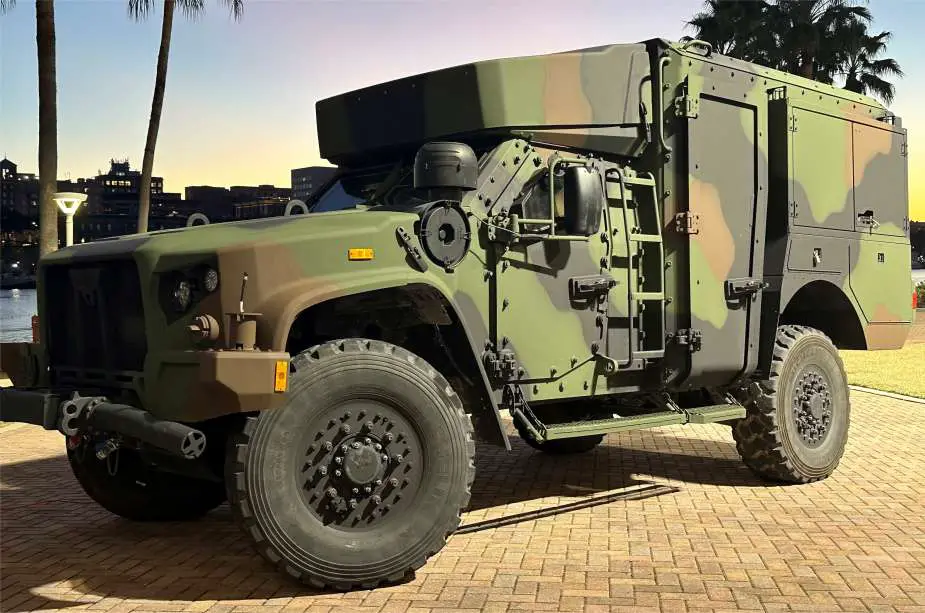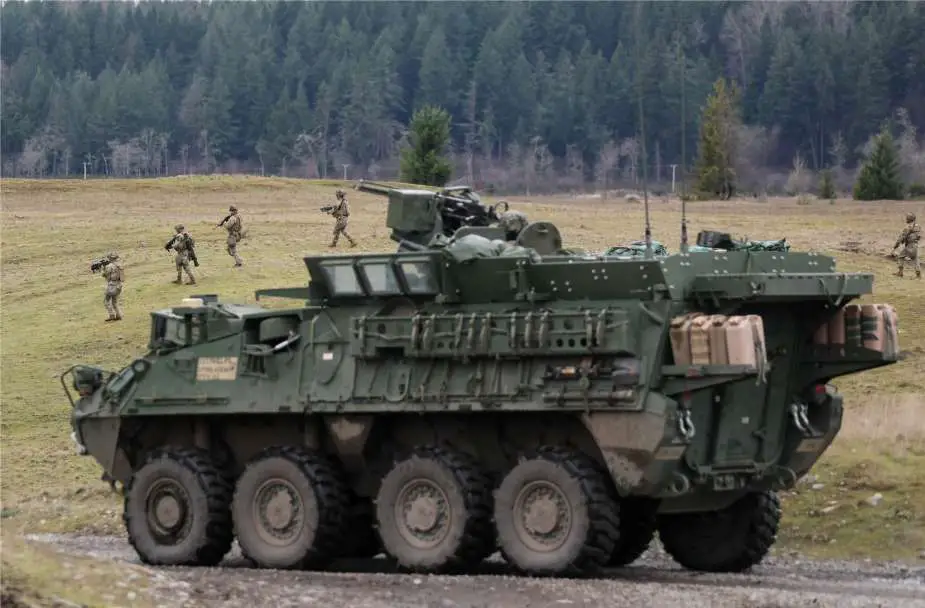Future conflicts necessitate adaptable and mobile command centers, as highlighted by Mollie Ryan in a report from U.S. PEO C3T Public Affairs. Acknowledging the dynamic nature of modern warfare, U.S. Army leaders recognize the need for commanders to lead while on the move, ready to disperse at a moment's notice. This understanding underscores the acknowledgment that a standardized approach to command posts is no longer viable in this evolving landscape.
Follow Army Recognition on Google News at this link

The Army’s Technical Exchange Meeting (TEM) 11, held in Savannah, Georgia, December 12-13 featured a prototype display of a Joint Light Tactical Vehicle integrated with Command Post Integrated Infrastructure (CPI2) capabilities (Picture source: U.S. Army/Paul Tardy)
During the Army's Network Technical Exchange Meeting (TEM) in December 2023 in Savannah, Georgia, plans for CPI2 Next were unveiled. This initiative represents the latest effort to modernize existing vehicle-based Command Post Integrated Infrastructure (CPI2) units, ensuring on-the-move command and control capabilities in anticipation of future combat scenarios.
The CPI2 program is integrating advanced network and communications technologies into various vehicle platforms. These platforms are then incrementally fielded to units for experimentation and feedback, shaping future iterations.
While current integrated command post platforms have demonstrated utility during unit experimentation, feedback from a Limited User Test (LUT) with the 1st Stryker Brigade Combat Team, 2nd Infantry Division (1-2) revealed a need for more adaptable, configurable command posts with enhanced dispersal capabilities. Key concerns identified included a lack of integrated power and insufficient wireless network configuration in existing Command Post Support Vehicles.
To address these concerns, solutions are being explored and discussed. One such solution involves installing generators onto CPI2-equipped vehicle platforms to replace the initially tested microgrid. These generators will facilitate rapid displacement and emplacement of mobile command posts, enhancing operational agility.
Additionally, efforts are underway to enhance wireless capabilities for on-the-move missions. The Army plans to issue a Request for Information to industry partners to improve or replace current onboard WiFi, ensuring robust capabilities to meet the demands of rapid movement and deployment.
Furthermore, the program is exploring innovations such as integrating command post capabilities into Joint Light Tactical Vehicles and enhancing fire support missions on the move with the Advanced Field Artillery Tactical Data System.
Looking ahead, the focus will be on developing more flexible integrated command post capabilities under CPI2 Next. This includes providing units with modular A-kits for vehicles and mission-tailored B-kits for Soldiers, allowing for optimal functionality without compromising dispersal capability.
Ultimately, the Army remains committed to seeking innovative solutions to meet evolving mobile and flexible command post requirements, leveraging partnerships with industry and allies to ensure readiness for future conflicts.

The 1-2 Stryker Brigade Combat Team requires seamless on-the-move (OTM) communications during each command post jump as it prepares for dismounted operations, as shown here on January 30, 2024, at Joint Base Lewis McChord, Washington. The unit is providing valuable feedback to the Army to help refine its enhanced OTM capability, the Command Post Integrated Infrastructure (CPI2) (Picture source: U.S. Army)
Defense News February 2024















